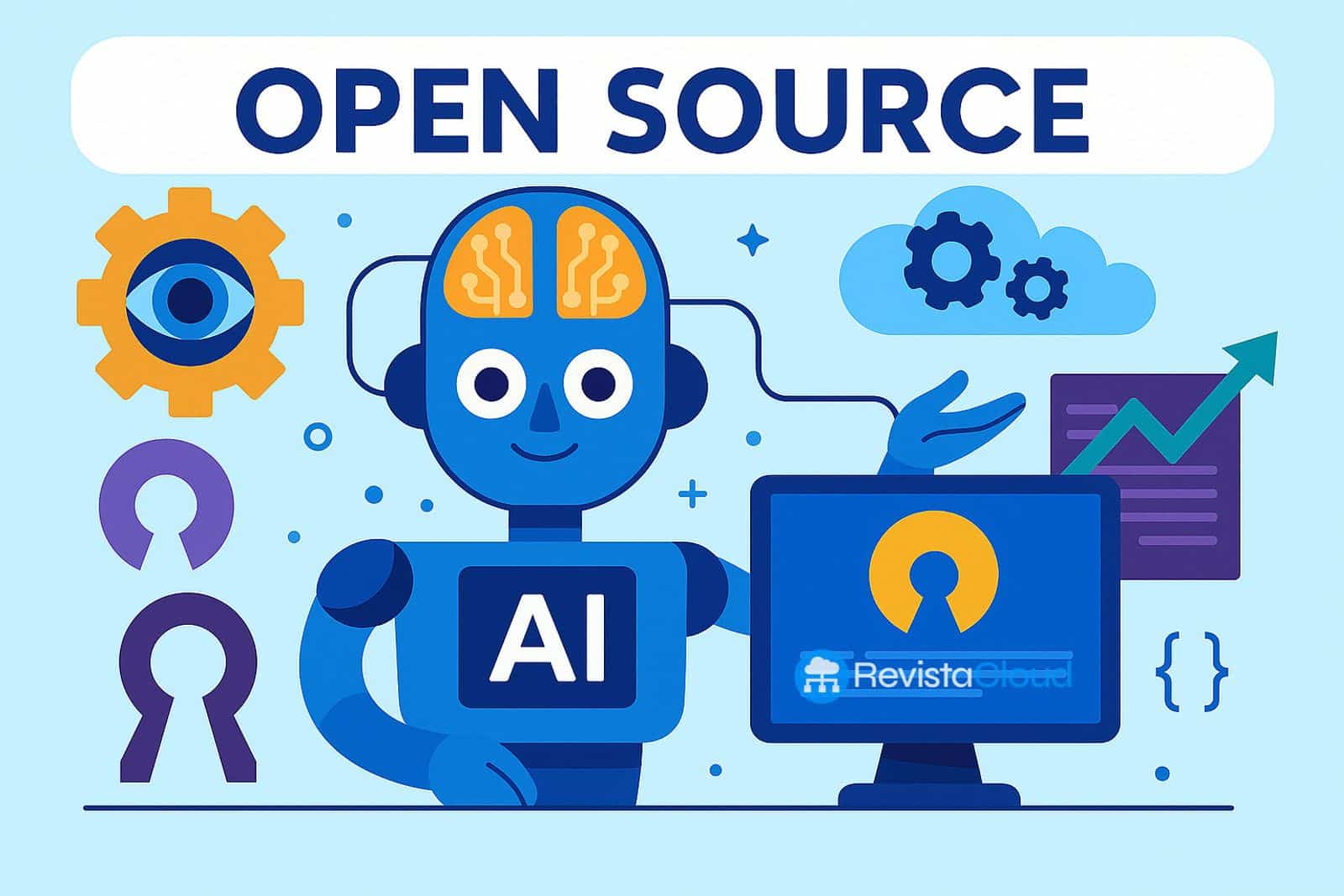Artificial intelligence is evolving at an unprecedented pace, and at the heart of this transformation is open-source software. Broadcom highlights how open-source projects are shaping the future of modern AI infrastructure, providing modularity, flexibility, and a committed community.
Artificial intelligence is no longer just a technological promise: it is a reality that is redefining how businesses operate, innovate, and compete. While large language models like ChatGPT grab headlines, the real drivers of this transformation are the foundations: open, interoperable platforms fueled by a global community. Chris Wolf, CTO of Broadcom, underscores this in a recent report detailing the critical role of open-source projects in the future of enterprise AI.
Why Open Source is Key in the New Era of AI
Open-source has accelerated the progress of AI beyond what any closed ecosystem could have achieved. The main reason: open collaboration. Diverse groups of researchers, developers, and companies work in real-time, sharing advances, fine-tuning models, and designing tools without proprietary barriers. The result is an unstoppable pace of innovation.
This approach also allows organizations to avoid the dreaded vendor lock-in. Open-source software offers autonomy: choosing hardware, managing costs, and adapting architectures. In a world where technological evolution occurs quarterly, this flexibility is no longer optional; it is a strategic necessity.
14 Open Source Projects Every Business Should Know
1. Hugging Face
It’s the GitHub of AI models. It offers thousands of ready-to-use models and datasets, as well as tools to evaluate performance, share experiences, and collaborate among teams.
2. vLLM
An inference engine developed at UC Berkeley. It supports multiple accelerators (NVIDIA, AMD, etc.) and allows for fast and portable inference. It is key to VMware’s Private AI Foundation platform.
3. NVIDIA Dynamo
A framework for generative AI that orchestrates multiple expert models for complex tasks. Modular and scalable, it is designed with the most demanding enterprise environments in mind.
4. Ray
Also developed in Berkeley, it enables training and inferring distributed models on clusters. It is used by OpenAI and other industry leaders.
5. SkyPilot
Facilitates hybrid operations: you can train in the cloud and perform inference locally, all from a single interface.
6. UCCL
A neutral alternative to NVIDIA’s NCCL, for efficiently moving data across multiple GPUs and networks during model training.
7. Chatbot Arena
A platform for openly comparing chat models. It allows confronting models like GPT-4 or LLaMA and assessing their performance in real time.
8. NovaSky
Focuses on post-training adaptation (fine-tuning), allowing the customization of foundational models without retraining from scratch.
9. OpenAI Triton
Simplifies GPU programming, allowing for the writing of portable and efficient code for various accelerated platforms.
10. MCP (Model Context Protocol)
A protocol for equipping AI models with real-time data access, without the need for constant updates to vector databases.
11. OPEA
A framework for deploying generative AI services, such as RAG for document retrieval, with ready-to-use templates.
12. Purple Llama
A set of projects to enhance model security: from detecting malicious instructions to preventing jailbreak attacks.
13. AI SBOM Generator
A Software Bill of Materials (SBOM) generator specific to AI, useful for assessing risks and complying with regulations.
14. UC Berkeley Sky Computing Lab
The academic lab behind many of these projects. Its focus on real-world problems and collaboration with companies like VMware makes it an essential player in the ecosystem.
Recommendations for Getting Started
Organizations starting in open-source AI should begin with a specific, measurable use case, such as automating customer service or implementing smart internal searches. From there, they can explore models on Hugging Face, use vLLM for inference, or SkyPilot for hybrid deployments.
At Broadcom, these practices are embedded in their Private AI Foundation platform with NVIDIA, built on Kubernetes and CNCF tools, with native integration of engines like vLLM and direct collaboration with AMD, Intel, and UC Berkeley.
Conclusion: The Future of AI Will Be Open
Success will not be measured by the size of the model or the number of GPUs, but by the ability to design adaptive, modular, and secure systems. And the best way to achieve this is through open source.
The projects mentioned are no longer just promises: they are the core of a new architecture for enterprise AI. If you haven’t explored them yet, now is the time.

